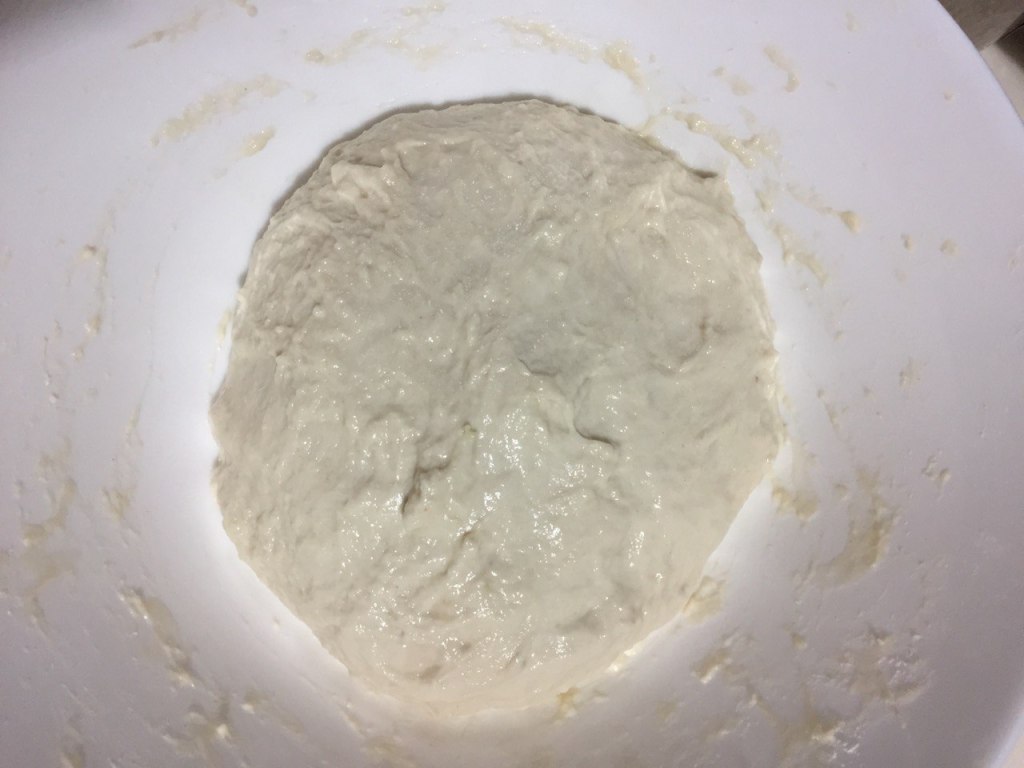This white bread is delicious and creamy, and reminds me of 80% Biga White Bread. The recipe, from Peter Reinhart’s book Artisan Breads Every Day (and also in his other book Bread Baker’s Apprentice), uses a cold and long rise technique. Similar to No-knead White Bread, the dough is left to rise for a long time, but here the amount of yeast is around double, since it ferments in the fridge. In my memory, no-knead white bread was less sticky when shaping, but the final loaf was less creamy.
The recipe also calls for cold water ~15 deg celsius to mix with the flour. I deviated from the recipe a little (adding in an autolyse step 10min), and followed the rest of the mixing, with three stretch and folds at 10min intervals. After this, I stored the dough in the fridge for 10 hours. The dough felt slightly cold to the touch during the folding, and slightly wet, but somewhat held its shape and was quite stretchable.

The result I got was an uneven crumb – the right side shown here had rather big holes, but the left side was a lot denser. Crumb was creamy, soft rather than chewy and rather flavourful. Crust was really crispy and delicious 1 hour after baking. I think the unevenness of the crumb could have to do with following mistakes.
For a future bake, I would go for a longer second rise out of the fridge. Straight out of the fridge, I would estimate that the dough hadn’t risen by much. I removed it from the fridge for 1 hour and tried to shape the dough into mini baguettes, but I found it rather sticky and hard to divide without ruining the gas structure in the dough. I could not lift the dough off the board, but it was still able to hold it’s shape, so after a few tries of forming it into a boule and failing at flipping it over, I ended up adding more flour to rotate the dough and round it, hopefully creating enough tension on the top. (First time with a boule without flipping it!)
Another mistake I made was that the dough stuck to the bowl, i.e. it ended up flopping into the pan a little, which also results in less oven rise. – it did rise upwards and inflate but there were no big splits on the loaf. And once again, I couldn’t score it :(( Maybe more flour is needed for the second rise? Or a proper banneton for the dough to breathe, so there isn’t excess moisture? I’m also not really sure on the proper technique for transferring the dough into the hot pan for baking. Tipping it onto my hands first also caused it to stick to my hands previously on some attempts – but that could be due to a dough structure that was not strong enough, perhaps not enough stretch and folds?


2 thoughts on “Pain a l’ancienne”